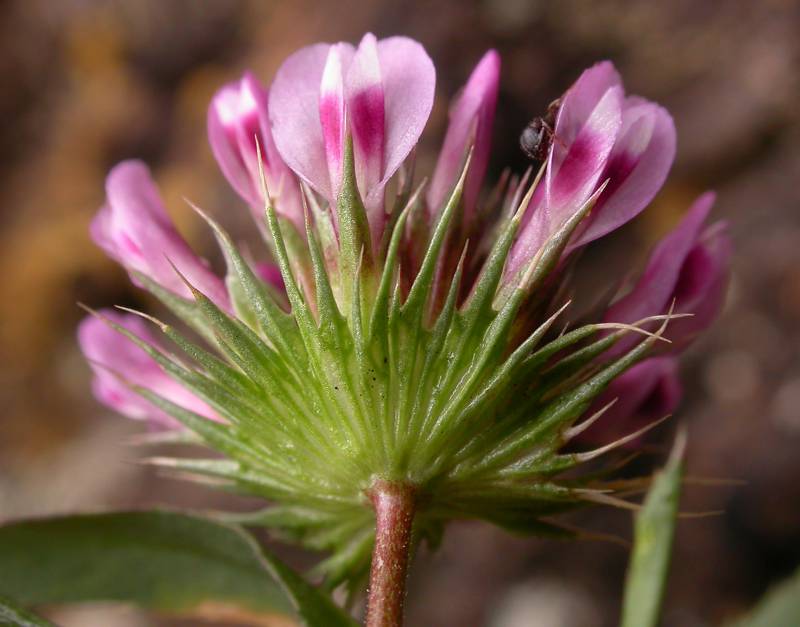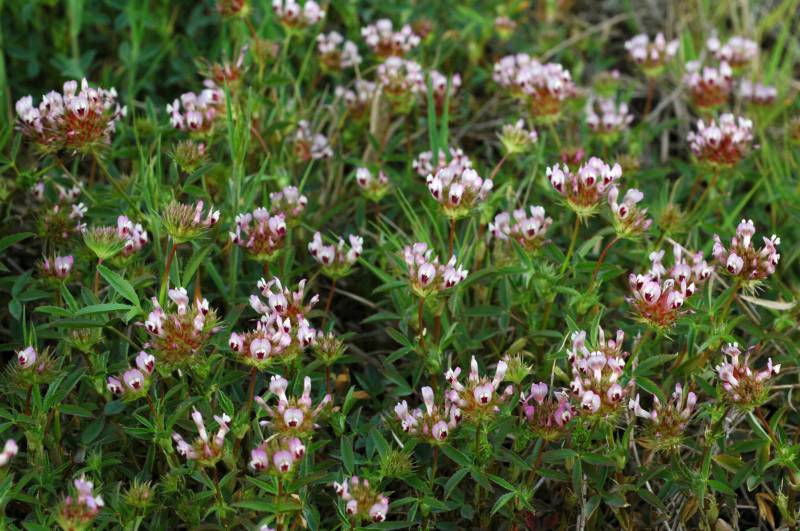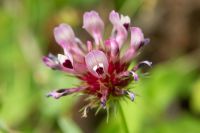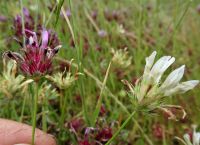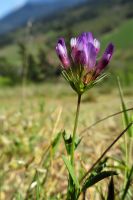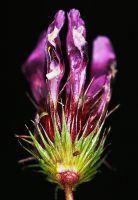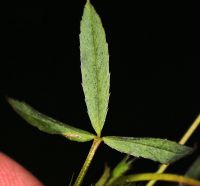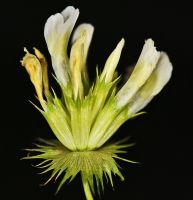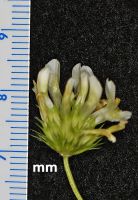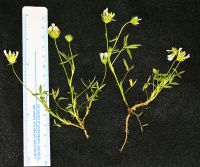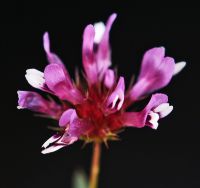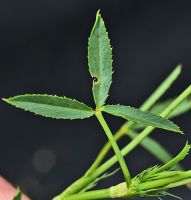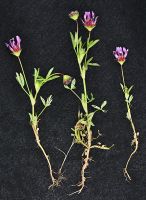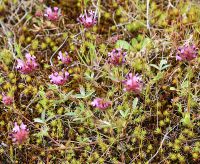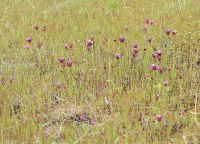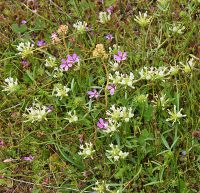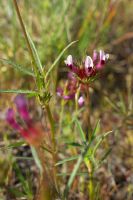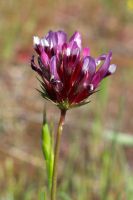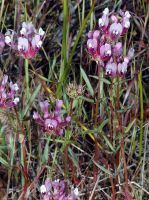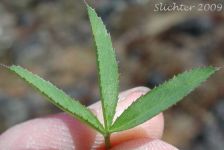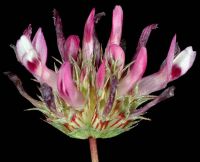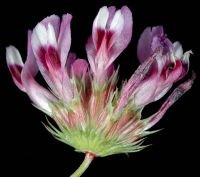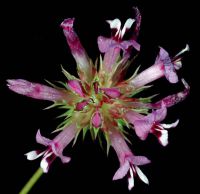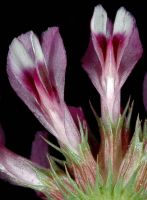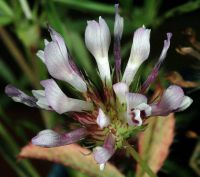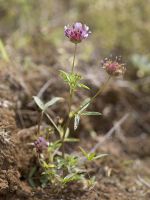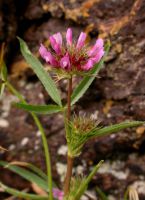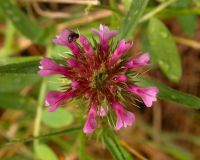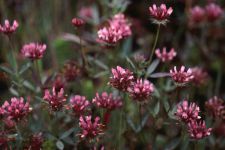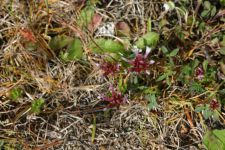Distribution: Occurring west of the Cascades crest and east along the Columbia River in Washington; British Columbia to California.
Habitat: Grassy hillsides, balds, prairies, and meadows at low to moderate elevations.
Flowers: April-July
Origin: Native
Growth Duration: Annual
Conservation Status: Not of concern
Pollination: Bumblebees, bees, butterflies, flies
Glabrous annual, the stems 1-7 dm. long, spreading to erect.
Leaves trifoliate, petioled; leaflets linear to narrowly oblong, 1-4 cm. long, usually serrulate full length; stipules ovate, lacerate, nearly half as long as the leaflets.
Inflorescence of 6- to 60-flowered, involucrate heads 10-30 mm. broad and long on axillary peduncles; involucre flared and saucer-shaped, irregularly lacerate into many unequal teeth; calyx often purplish, the tube 15-25 nerved, the 5 teeth lanceolate, equal to the tube; corolla pea-like, purplish, often lighter or darker at the tip, slightly longer than the calyx.
Pod usually 2-seeded.
Publication: Syst. Veg. 3: 208. 1826.
Trifolium tridentatum Lindl. var. aciculare (Nutt.) McDermott
PNW Herbaria: Specimen records of Trifolium willdenovii in the Consortium of Pacific Northwest Herbaria database.
WA Flora Checklist: Trifolium willdenovii checklist entry.
OregonFlora: Trifolium willdenovii information.
E-Flora BC: Trifolium willdenovii atlas page.
CalPhotos: Trifolium willdenovii photos.
USDA Plants: Trifolium willdenovii information.

